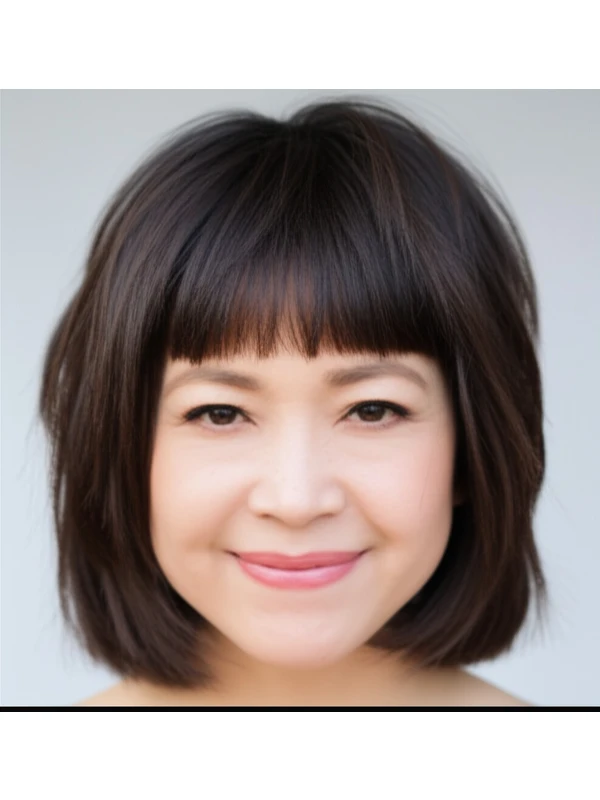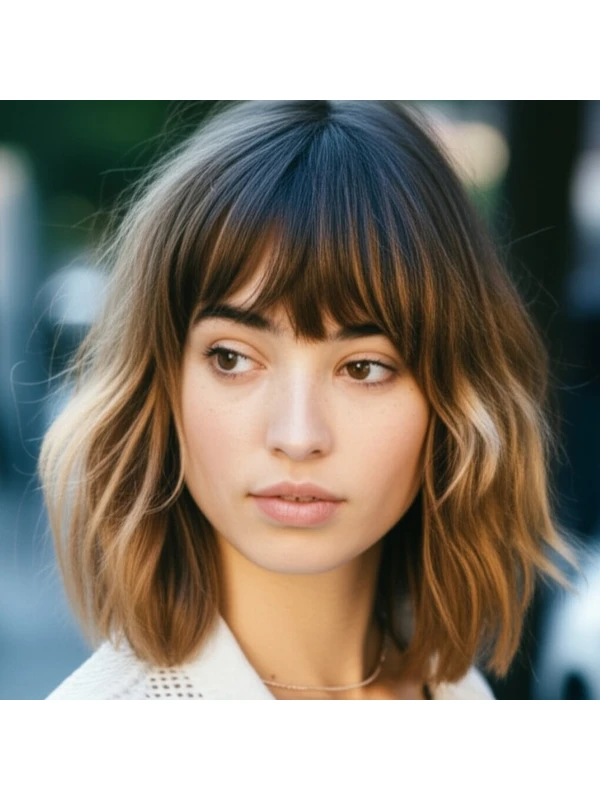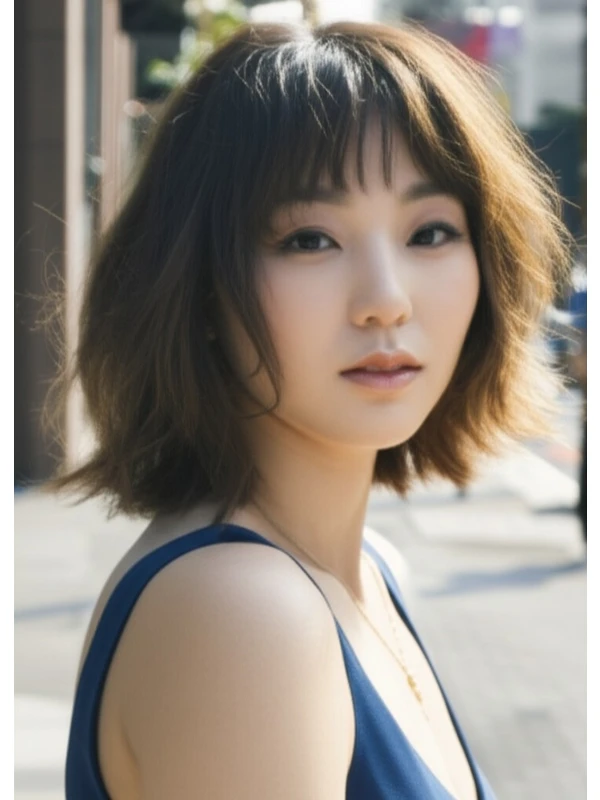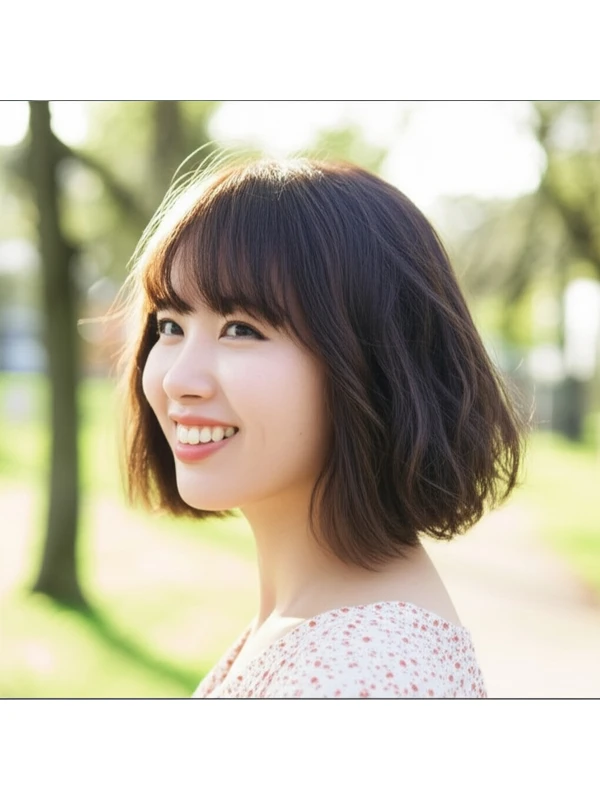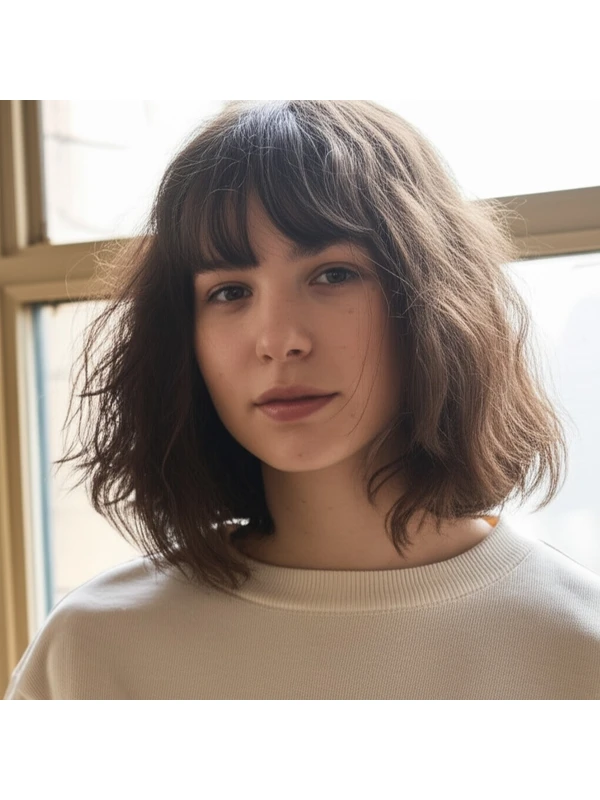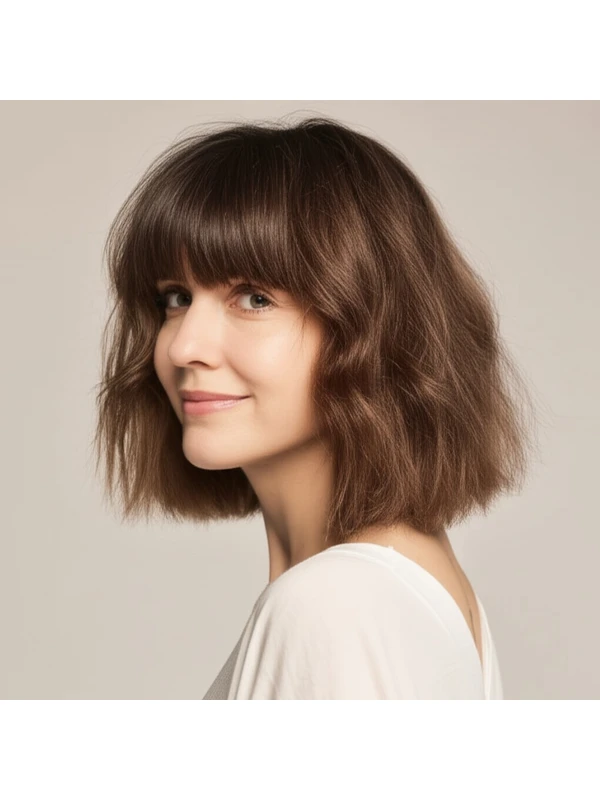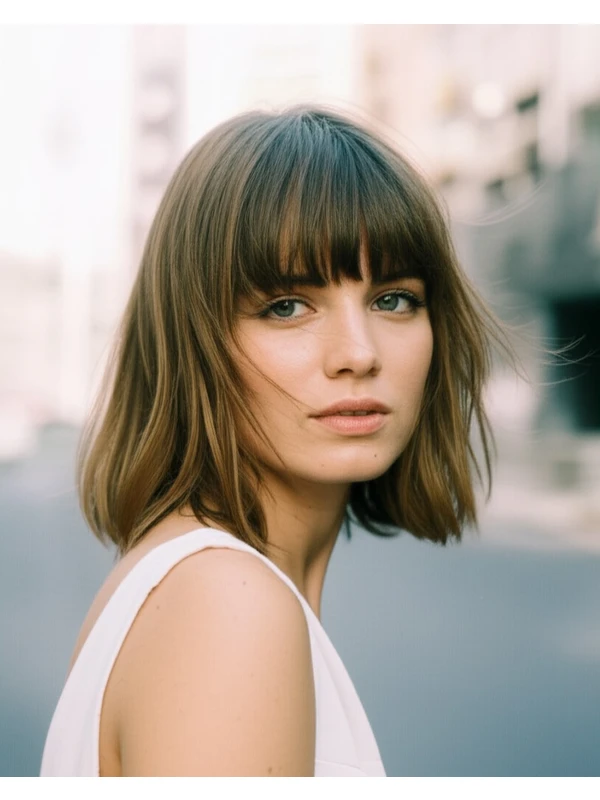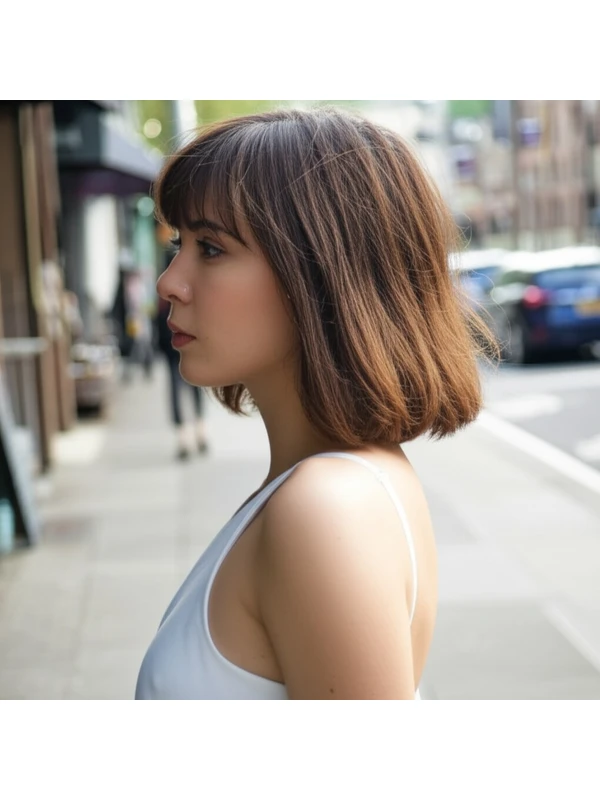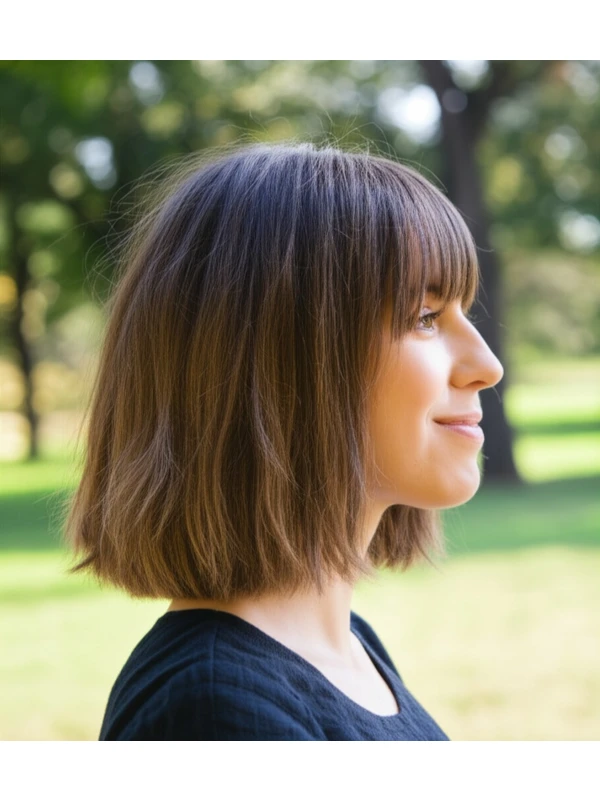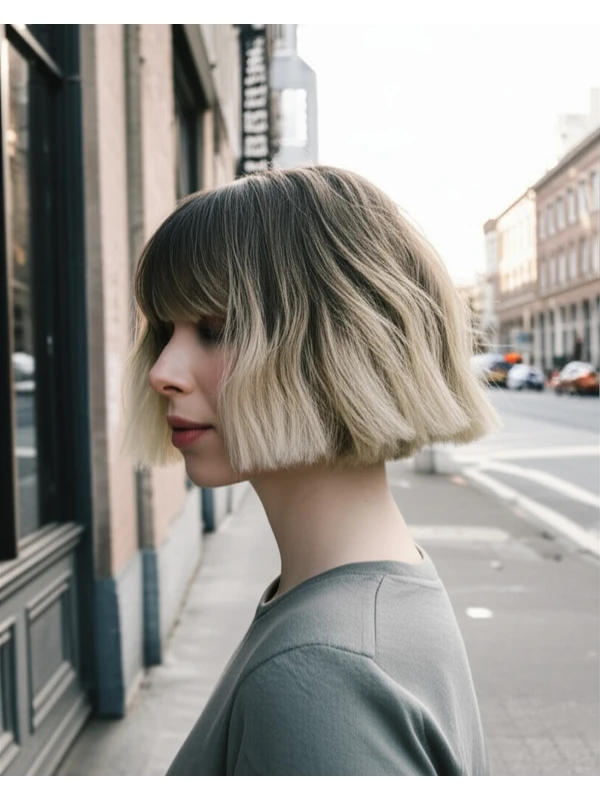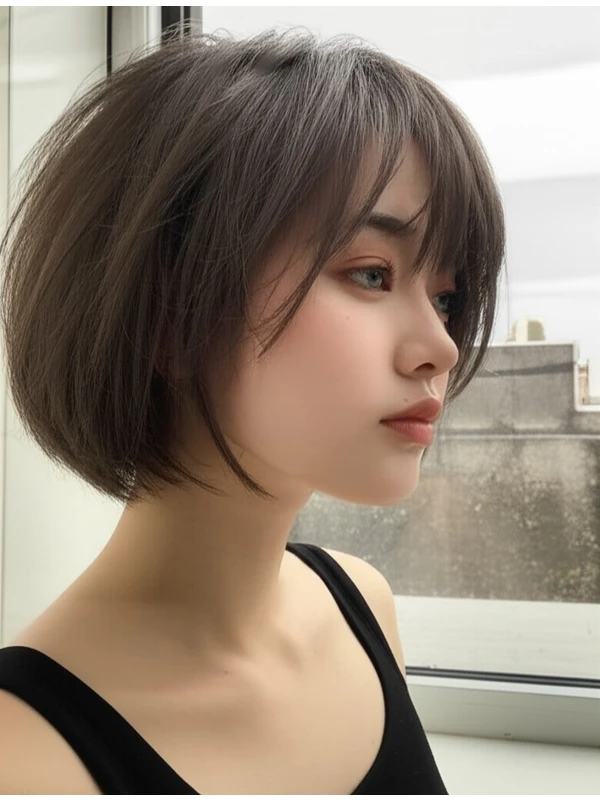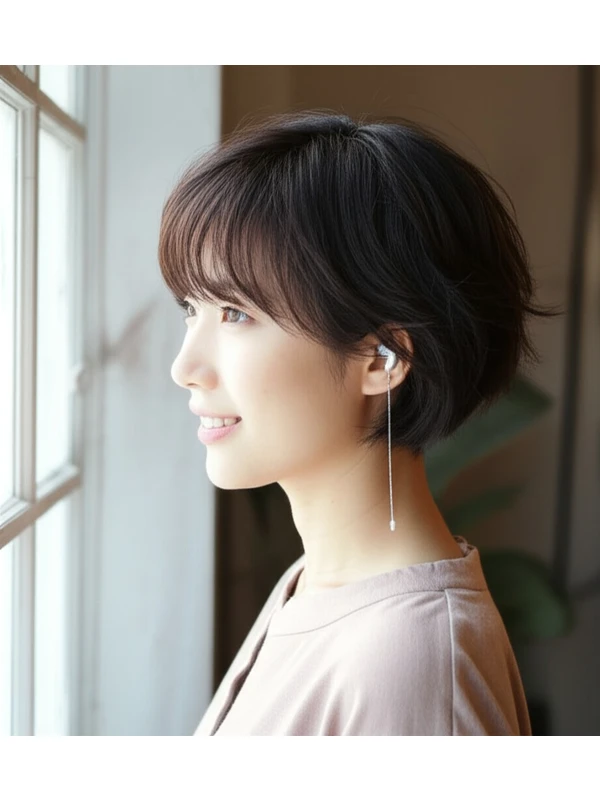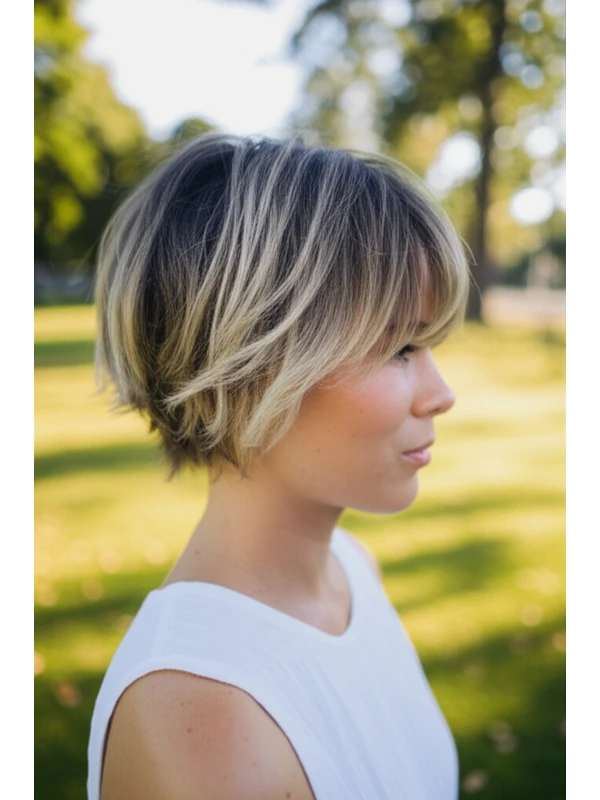#Blunt Bangs: A Modern Classic
Blunt bangs are having a moment – and for good reason! They're chic, versatile, and can instantly update your look. But before you rush to the salon chair, let’s dive into everything you need to know about this popular style. This guide will cover how they work with different face shapes, hair types, and lifestyles so you can confidently decide if blunt bangs are right for you.
#1) Background & Definition: What Are Blunt Bangs?
Blunt bangs are a fringe cut straight across the forehead in a single, even line. The key is that there’s minimal layering or point-cutting – hence the "blunt" description. They create a strong, defined look that draws attention to your eyes and cheekbones.
- Geometry: A horizontal line, typically ranging from just above the eyebrows to slightly covering them.
- Key Features: Sharp edge, even length, minimal layering.
- Length Ranges: Generally between 5-8 inches (12-20 cm) long, but can be shorter or longer depending on preference and face shape.
- Alternative Names: Straight bangs, curtain bangs (when styled softly), baby bangs (shorter version).
#2) Face Shape Fit: Finding Your Perfect Fringe
Blunt bangs aren’t a one-size-fits-all style. Here's how they can complement different face shapes and what fringe options work best:
- Oval: Lucky you! Blunt bangs generally look fantastic on oval faces, balancing the symmetry beautifully. A full, slightly longer blunt bang is a great choice.
- Round: A blunt bang can help add angles to a round face. Keep them relatively thick and avoid overly short styles that might accentuate width. Consider angling them slightly to create more definition.
- Square: Soften those strong jawlines with blunt bangs! A full, straight-across fringe helps break up the angularity. A side part can also add softness.
- Heart: Blunt bangs work well on heart-shaped faces by balancing a wider forehead and drawing attention downwards. A slightly longer bang that grazes the eyebrows is often flattering.
- Diamond: Similar to heart shapes, blunt bangs can soften diamond face shapes’ angles. A full fringe helps create balance between the wide cheekbones and narrower chin.
- Oblong (Long): Blunt bangs add width to a long face, making it appear more balanced. A thicker bang is recommended for maximum impact.
#3) Body Proportions & Height Guidance: Considering Your Silhouette
Beyond your face shape, consider your overall body proportions when deciding on the length and volume of your blunt bangs.
- Petite: Shorter to medium-length blunt bangs can prevent you from looking overwhelmed. Avoid overly thick or long fringes that might shorten your appearance further.
- Average Height: You have more flexibility! Experiment with different lengths and thicknesses to find what suits you best.
- Tall: Longer, fuller blunt bangs can help balance a taller frame.
- Narrow Shoulders: A thicker bang adds visual width, balancing narrow shoulders.
- Broad Shoulders: A slightly thinner or angled fringe won’t emphasize shoulder width as much.
- Short Neck: Shorter blunt bangs are generally more flattering than long ones, preventing the neck from appearing even shorter.
- Long Neck: Longer blunt bangs can help visually shorten a longer neck.
#4) Works Best With Hair Types & Densities: A Texture Breakdown
Blunt bangs can be adapted for various hair types and densities, but some adjustments are needed:
- Straight Hair: The easiest to achieve the classic blunt look! Styling is generally simple.
- Wavy Hair: Requires careful cutting to account for natural wave patterns. Bangs may need more styling to keep them straight or embrace a softer, textured fringe.
- Curly/Coily Hair: Shrinkage is key! Your stylist needs to cut the bangs longer than they’ll appear dry, accounting for shrinkage. Expect more maintenance and potentially daily styling.
- Fine Hair: Blunt bangs can make fine hair look even thinner if not styled correctly. A slightly thicker bang or texturizing spray can add volume.
- Medium Hair: Blunt bangs work well with medium density – you have enough hair to create the desired fullness, but not so much that it looks heavy.
- Thick Hair: Blunt bangs look fantastic on thick hair! They’ll provide a strong, defined line and balance the overall volume.
Shrinkage Tip for Curls/Coils: Curly and coily hair shrinks significantly when dry. A stylist needs to factor this in when cutting your bangs – they'll cut them longer than you think!
#5) Styling Variations: From Sleek to Textured
The beauty of blunt bangs is their versatility. Here are a few styling options:
- Sleek vs. Texturized: For a polished look, use a flat iron and smoothing serum. For a more relaxed vibe, air dry or lightly tousle with your fingers.
- Middle vs. Side Part: A middle part creates symmetry; a side part adds softness and asymmetry.
- Fringe Variations: Experiment with different lengths – shorter for a bolder look, longer to graze the eyebrows for a softer feel.
- Occasion Styling:
- Casual: Air-dried or slightly textured.
- Office: Sleek and straight for a professional appearance.
- Evening: Add volume with root lifter and styling products.
#6) Maintenance: Keeping Your Bangs on Point
- Trim Cadence: Every 2-4 weeks, depending on how quickly your hair grows and the desired length.
- At-Home Routine: Gentle cleansing shampoo and conditioner are essential. Avoid over-washing to prevent dryness.
- Heat vs Air Dry: Heat styling provides a sleek look, but air drying is healthier for your hair.
- Product Checklist:
- Shampoo & Conditioner (suited to your hair type)
- Leave-in Conditioner (for moisture and detangling)
- Styling Cream/Serum (to control frizz and add shine)
- Dry Texture Spray or Mousse (for volume and texture, especially for fine hair)
- Estimated Daily Styling Time: 5-15 minutes, depending on your desired style.
#7) Grow-Out Roadmap: The Evolution of Your Bangs
Blunt bangs change as they grow out. Here’s what to expect:
- Months 1-3: The sharp line will start to soften and become less defined.
- Months 3-6: You can either trim them back into the original blunt shape or begin to transition towards a more blended, curtain bang style.
- Maintaining Shape: Regular trims are crucial during this grow-out phase to prevent an awkward, overgrown look.
#8) Color Pairings: Enhancing Your Bangs with Hue
Color can significantly enhance your blunt bangs!
- Cool Undertones (ash blonde, cool brown): Blunt bangs create a striking contrast against cooler tones.
- Warm Undertones (golden blonde, warm brown): A softer, more blended look is achieved by incorporating warmer highlights within the bangs.
- Low-Commitment Options: Balayage or babylights can add subtle dimension and interest to your blunt bangs without a drastic color change.
#9) Season & Occasion Guide: Styling for Every Moment
- Spring/Summer: Embrace a lighter, air-dried look with beachy texture.
- Fall/Winter: A sleek, polished style is perfect for colder months and more formal occasions.
- Work: Keep it neat and tidy – a straight, well-defined fringe projects professionalism.
- Weddings/Parties: Add volume and drama with styling products to make your bangs stand out.
#10) Cost & Time: What to Expect at the Salon
- Salon Time: Typically 30-60 minutes for a blunt bang cut, depending on hair density and complexity.
- Estimated Price Range: A blunt bang trim usually costs less than a full haircut – expect an additional $25-$75 (or equivalent) added to your existing service price.
#11) Pros & Cons: Weighing the Options
Pros:
- Instantly updates your look.
- Draws attention to your eyes and cheekbones.
- Versatile styling options.
- Can balance face shape and proportions.
Cons:
- Requires regular trims (every 2-4 weeks).
- Styling can be time-consuming, especially for certain hair types.
- Grow-out phase can be awkward if not managed properly.
#12) Salon Consultation Script: Questions to Ask Your Stylist
Prepare for your appointment with these questions:
- “I’m interested in blunt bangs – do you think they would suit my face shape?”
- "How will you account for my hair's natural texture/shrinkage when cutting the bangs?"
- "Can you show me examples of different blunt bang lengths and thicknesses?"
- “What styling products and techniques would you recommend for maintaining this style?”
- “How often should I come in for trims to keep the shape looking its best?”
#FAQs: Your Blunt Bangs Questions Answered
- Are blunt bangs difficult to style? Not necessarily! It depends on your hair type and desired look. With practice, you can master a few simple styling techniques.
- Can I get blunt bangs if my hair is layered? Yes, but it requires careful cutting by an experienced stylist who understands how layers will affect the final result.
- What if I don’t like them after getting them cut? The grow-out process takes time, but you can style your bangs to one side or pin them back while they grow out. Regular trims are key!
- Can blunt bangs make my face look wider? Yes, if the bangs are too thick and not styled correctly. A stylist can adjust the thickness and angle of the bangs to avoid this.
- Are blunt bangs suitable for older women? Absolutely! They can be a youthful and flattering style at any age.
- Will blunt bangs damage my hair? Like any hairstyle, regular trims are essential to prevent split ends. Proper styling techniques and heat protection will also help minimize potential damage.
